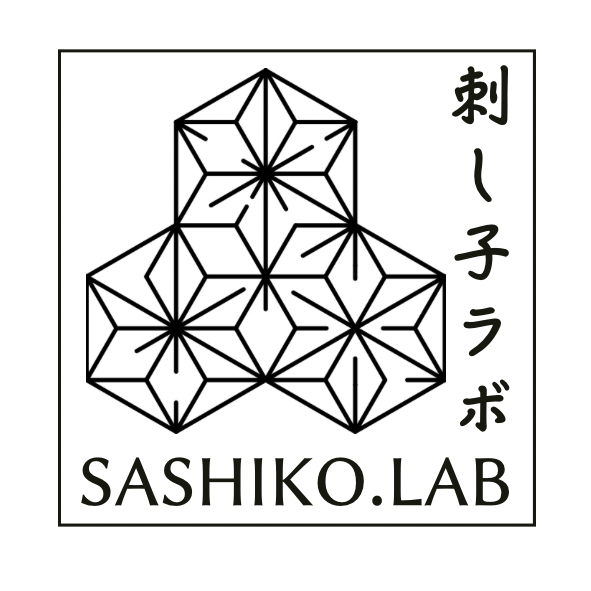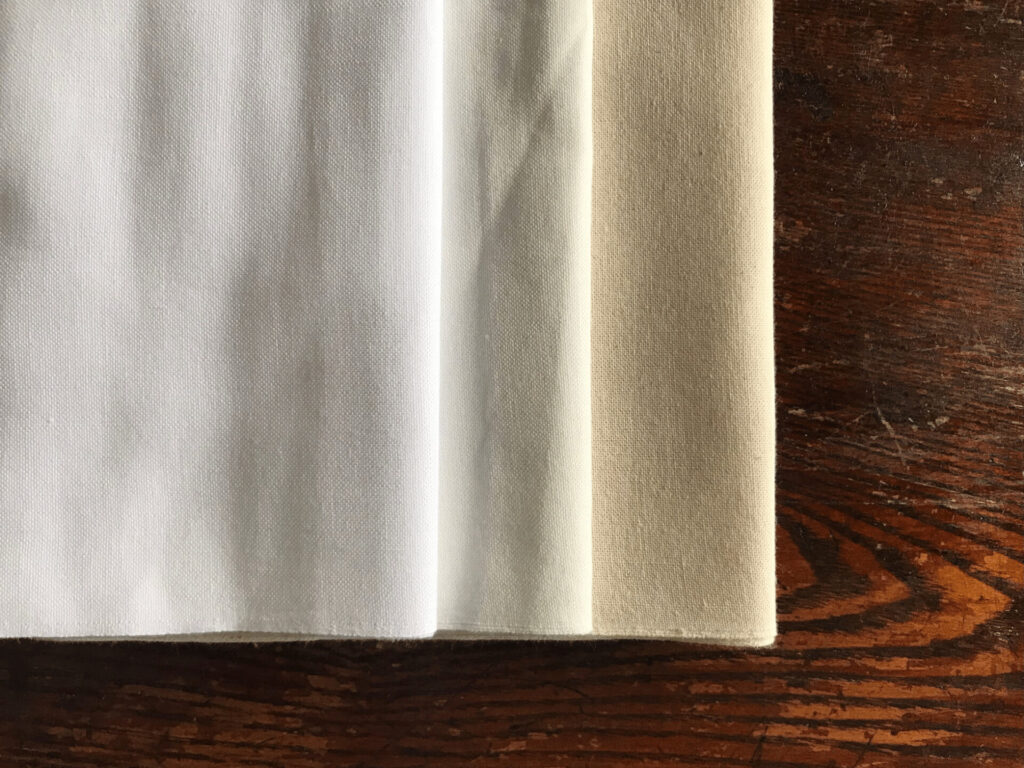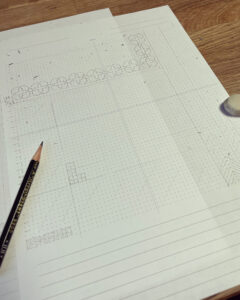What is sarashi?
Sashiko's original purpose
Before explaining about sarashi, let's talk about sashiko's original purposes. Traditionally speaking, sashiko had been stitched on clothes to reinforce the fabric. People in cold regions stitched sashiko on their whole kimonos to make them warm, farmers stitched sashiko on their working clothes especially on the shoulders or knees to make them durable. That was an era when cloth was extremely precious. People stitched sashiko not for fun nor to decorate the cloth, but they simply needed to.
Sashiko in modern time
Now we are living in a mass consumption society. Cloth are not precious at all anymore. We can easily get cheap clothes and we don't have a necessity to reinforce or mend our clothes. As a consequence, stitching sashiko on fukin (dish cloths or kitchen towels) became a new standard in modern days in Japan.
The sashiko stitched fukins are called Hana-fukin. Hana means flower in Japanese and they are called as "flowery cloths" because sashiko brighten the fukin as if flowers are blooming. ( To be exact, hana-fukin has a decent history, but that will be an another issue. )
Most of the pre-printed sashiko cloths that you can buy in Japanese craft stores are designed to make Hana-fukin. And sarashi is the name of the fabric of hana-fukin. It is thin, commonly white, 100% cotton, evenly woven fabric.
Sarashi's various usages
I said sarashi is the name of the fabric for making hana-fukin. But it's not the material only for making hana-fukin. It's been traditionally used in Japan in a variety of ways.
These are some examples :
- Wrapping around the body under a kimono to flatten the bust line
- Wrapping around below the belly during pregnancy hoping easy delivery
- Wrapping around the waist after the birth of a child
- As an underwear of festival costumes
- Material for cloth diapers
- Material for baby's clothes
- Material for Tenugui (Japanese towel)
The usages in kitchen :
- Straining dashi ( the soup stock )
- Wiping the dishes, hands or tables
- Draining vegetables, tofu, yogurt
- As a dust cover
- Wrapping vegetables with wet sarashi instead of plastic wrap
- As a steaming cloth
and so on. Sarashi is basically a long cloth with about 34cm in width, 10m in length. So you can cut at your desired length for various purposes. When we use them to make Hana-fukin, we usually double the cloth to make it absorbent and durable.
Which kind of sarashi should we choose?
I have been asked this same question several times with this particular image below. Let me get straight to the point, these names of sarashi ( like Mashiro, Matsuri or Tamawata ) are not common. Maybe they are the unique names by a particular brand or maker. Therefore I can't say which is good or bad.
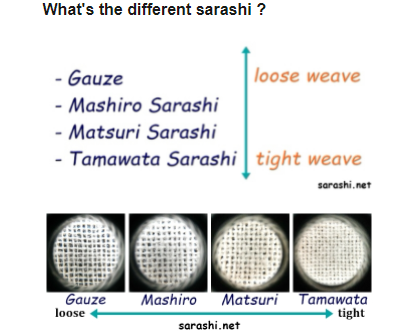
When we distinguish the count of sarashi fabric, we use 文(bun) and 岡(oka).
文(bun) - 20 count, woven with thick threads, breathable material
岡(oka) - 30 count, woven with thin threads, tightly woven compared to 文
It's all about your preference, and you can choose either. Actually, most of Japanese people don't care about the fabric count that much since most of the craft stores have only one type of sarashi in stock and we don't have a choice. When we purchase online, we may be able to choose specific count from different brands, but even in online shops, they don't always say 文 or 岡 either.
In my opinion, the common sarashi for Hana-fukin is 文(bun), the roughly woven ones. I believe that the pre-printed sashiko cloths from Olympus are as thick as 文(bun); the 20 count. They are breathable, absorbent, and dry quickly. Perfect to use in kitchen.
Color variations
When purchasing sarashi, there are mainly two options.
1. Purchase a bolt of plain sarashi fabric (about 34cm in width, 10m in length)
2. Purchase a pack of pre-cut / pre-stenciled sarashi fabric (about 34cm in width, 70cm in length)
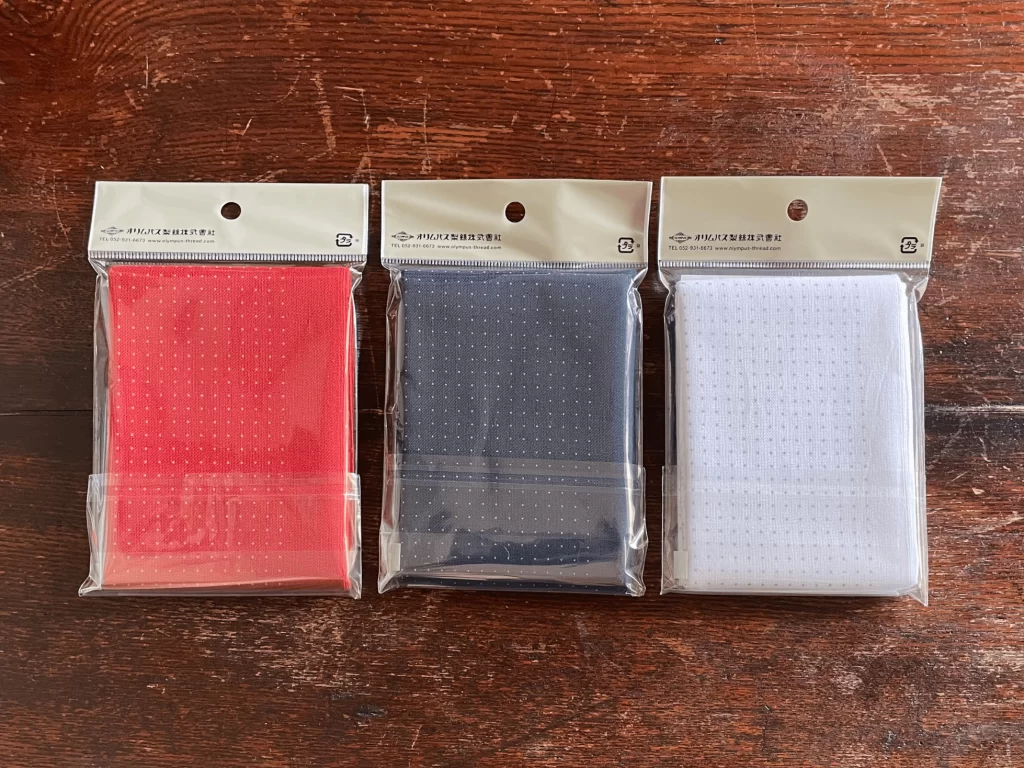
As I mentioned earlier, when we buy a bolt of sarashi in the store, we usually have only one option : the bleach-white one. That's the most standard color and the only option in most of the stores. In my online store, on the other hand, I have two more options : the natural-white and the ecru colors. (Because I like to choose the fabric color to match the threads. The natural dyed threads go well with these two fabric colors.) The pre-cut / the pre-stenciled sashiko cloths have more variety in colors. There are some more colors other than these three (red, navy, white) but the main colors will be bleach-white and navy.
A pack of sashiko cloth is designed to make one Hana-fukin. But if you buy a bolt, you can make at least 14 hana-fukin. ( And you can use the rest for another purposes, too! ) So if you are able to draw the pattern by yourself, you can say that buying a bolt is a better deal.
I think I wrote pretty much everything about sarashi. I will add more when I come up with additional informations. Happy stitching!
